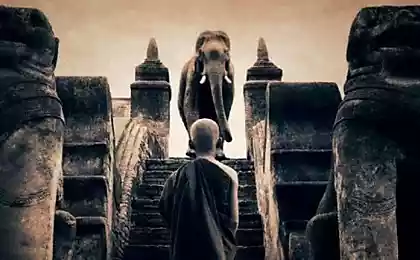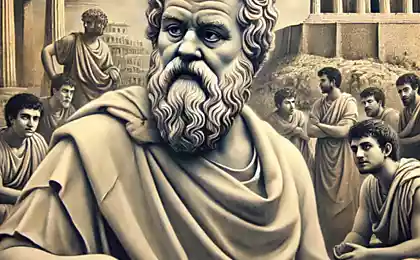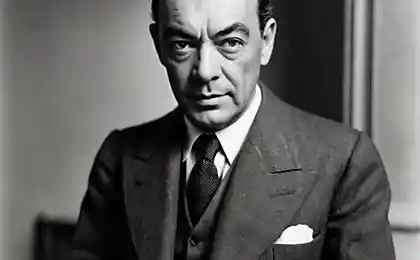188
5 Indian thinkers whose names you need to know

There is no philosophy outside of Europe, and perhaps there is, but deep thought can be found in any culture. The Indian philosophical tradition, dating back more than three millennia, has given the world unique concepts and ideas that continue to inspire and enlighten people around the world. In this article, we will meet five prominent Indian thinkers whose heritage continues to shape not only the Eastern but also the Western worldview.
1. Buddha Shakyamuni (563-483 BC) – founder of the philosophical revolution
Siddhartha Gautama, known as the Buddha, not only founded one of the world's religions, but also created a deep philosophical system that was radically different from the prevailing Vedic traditions of his time. The Buddha proposed a middle way between asceticism and hedonism, and his teachings are based on a deep analysis of human experience.
Central to the Buddha’s philosophy is the Four Noble Truths and the concept of anatman (the absence of a permanent self). He gave up metaphysical speculation, focusing on the practical side of liberation from suffering.
“All composite things are impermanent. When a person sees this with wisdom, he turns away from suffering – it is the path to purity.”
Key ideas of the Buddha, relevant today:
- The middle way Avoiding extremes, seeking balance in life.
- Impermanence Accepting the changing nature of reality as an antidote to fear of change.
- Meditation. As an instrument of self-knowledge and psychological well-being.
- Non-violence (ahimsa) An ethical principle of universal importance.
2. Nagarjuna (150-250 AD) – master of dialectics
Nagarjuna is considered one of the deepest philosophers not only of India, but of the whole world. The founder of the Madhyamaka school of Buddhism, he developed the concept of shunyata (emptiness), which overturned the notion of reality.
In his fundamental work Mulamadhyamaka-karika (Main Verses on the Middle Path), Nagarjuna uses tetralemma, a logical method involving four alternatives, to show the inconsistency of any metaphysical statement. His dialectics anticipated many ideas of postmodernism and deconstruction.

Nagarjuna demonstrates that all phenomena are interdependent and have no independent essence of their own. His philosophy of emptiness is not nihilism, but rather an understanding of the conventionality of any conceptual construction.
How to apply the ideas of Nagarjuna in modern life:
- Practice intellectual modesty – even the most compelling concepts contain internal contradictions.
- Explore the interdependence of phenomena – understanding the connections between events helps you see more broadly.
- Use a dialectical approach when solving complex problems - view the issue from different, opposite points of view.
- Free yourself from rigid mental constructs, show flexibility of thinking.
3. Shankara (788-820) – architect of non-duality
Adi Shankara lived only 32 years, but managed to create a philosophical system of Advaita Vedanta, which has a tremendous influence on Indian thought. Advaita (non-duality) affirms the unity of the individual soul (atman) and the supreme reality (Brahman).
Sankara wrote commentaries on the main Upanishads, the Bhagavad-gita and the Brahma-sutras, systematizing the disparate mystical insights of ancient texts into a coherent philosophical system. His concept of maya (illusion) explains the apparent diversity of the world with the fundamental unity of reality.
The world is an appearance superimposed on reality, like a snake being superimposed on a rope at dusk.
Unlike the Buddhist teaching on emptiness, Sankara postulates the existence of a higher reality (Brahman), but denies the reality of individual objects and individual selves. The apparent diversity of the world is the result of ignorance (avidya).
Practical Lessons in Sankara Philosophy:
- Cultivate the distinction between the real and the unreal - learn to see beyond the surface of phenomena their true nature.
- Practice self-exploration (atma-vichara) – a deep analysis of the self and its mechanisms.
- Be aware of the relativity of worldly experience while retaining inner freedom from circumstance.
- Look for unity in diversity—behind differences, find the common ground of phenomena.
4. Ramanuja (1017-1137), philosopher of divine love
Ramanuja created the philosophy of Vishishta Advaita (qualified non-duality), which offers an alternative to the radical monism of Shankara. According to his teachings, individual souls and the material world are real, but are attributes or "body" of the supreme deity.
Ramanuja’s philosophy emphasizes the importance of bhakti (devotion) and the grace of God for spiritual unfoldment. He rejected the idea of the illusory world, asserting its divine nature and reality.

Ramanuja democratized spiritual practices, opening up the possibility of emancipation for all castes, including the lower castes, and for women. His ideas of divine mercy and love had a profound influence on the development of bhakti movements in India.
How to embody Ramanuja’s wisdom in modern life:
- Develop emotional intelligence alongside rational intelligence—feelings and devotion are just as important as logic.
- Practice Inclusiveness – Spiritual growth should be available to everyone, regardless of background.
- Strive for the harmony of diversity, not its negation – differences complement unity, not contradict it.
- Cultivate a relationship of love and service as a path to fulfillment.
5. Jiddu Krishnamurti (1895-1986), philosopher of freedom
Krishnamurti represents modern Indian philosophical thought, free from traditional religious frameworks. Rejecting the role of the new messiah he had been prophesied in the Theosophical Society, he developed a radical approach to truth that rejected all authority, organization, and system.
The central idea of Krishnamurti’s philosophy is that “truth is a country without roads,” which cannot be reached through organized religions, ideologies or spiritual techniques. He called for a total awareness of thought processes without choice or evaluation.
Observation without evaluation is the highest form of intelligence.
Krishnamurti analyzed the psychological mechanisms of fear, desire, conflict, and time, showing how they produce suffering and separation. His dialogues with physicist David Bohm demonstrated a deep understanding of the problems of modern consciousness and society.
How to apply the Krishnamurti approach:
- Practice "observation without an observer" - pure attention to what is happening in the mind.
- Develop independent thinking by questioning all authority, including your own beliefs.
- Explore the motivation of your actions without excuses or condensation.
- Cultivate the "art of listening" - full attention to the interlocutor without projecting your ideas.
- Observe thoughts and emotions without interference, allowing them to reveal their nature.
Indian thought in the modern world: significance and relevance
The Indian philosophical tradition is a rich treasure trove of ideas and methods that can enrich the modern worldview. From Buddha’s deep psychological analysis to Nagarjuna’s dialectical constructions, from Sankara’s metaphysical insights to Ramanuja’s devotion to Krishnamurti’s radical freedom, these thinkers offer unique approaches to the eternal questions of human existence.
Their ideas are especially relevant today, when technological progress is outpacing the development of wisdom, and global problems require new ways of thinking. Indian philosophers offer holistic models of reality that transcend the dualism of subject and object that underlies many contemporary crises.
Meeting these thinkers broadens our philosophical horizon and reminds us that wisdom is not the monopoly of any one culture. Their heritage offers not only theoretical constructions, but also practical methods of consciousness transformation necessary to solve the internal and external problems of mankind.
Advice on the study of Indian philosophy:
- Start with original texts in good translations, not comments or popular interpretations.
- Study the context of the creation of philosophical systems - the historical and cultural conditions of their origin.
- Comparison of Indian concepts with Western counterparts helps to better understand the uniqueness of each tradition.
- Put theoretical ideas into practice – Indian philosophy has always had a practical focus.
- Pay attention to linguistic nuances – many Sanskrit terms have no exact analogues in European languages.
Glossary of key terms
advaita
The philosophical doctrine of nonduality, which affirms the unity of the individual soul (atman) and absolute reality (Brahman).
Anatman
The Buddhist concept of the absence of a permanent, independent self or soul; the opposite of the Hindu concept of atman.
Atman
In Hindu philosophy, the true self, the soul, the inner essence of man, identical with Brahman (higher reality).
Ahimsa
The principle of nonviolence is one of the fundamental ethical principles of Indian philosophy, especially in Jainism and Buddhism.
bhakti
The path of devotion to a deity; emotional attachment and love for a higher being as a form of spiritual practice.
viveca
The distinction between the real and the unreal, the true and the illusory; an important practice in Advaita Vedanta.
Maya
An illusion, a cosmic illusion that hides the true nature of reality; in Advaita, a principle that explains the apparent diversity of the world under fundamental unity.
shunyata
Emptiness; a central concept in the philosophy of Madhyamaki Nagarjuna, meaning the absence of independent existence in all phenomena.
tetralemma
The logical method used by Nagarjuna includes four alternatives: “is”, “is not”, “is and is not”, “neither is nor is”.
Vishishta-advaita
“Qualified nonduality” is Ramanuja’s philosophical system that recognizes the reality of individual souls and the material world as attributes of a supreme deity.























